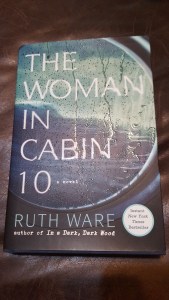it’s always the husband Book Review

The plot centers on three freshman roommates. However, Campbell hooks you right from the beginning with a potential murder of one of the roommates as a now pregnant 40-year-old. Some people have trouble with a now/then approach to writing but I think the set-up works for it’s always the husband.
Campbell does a wonderful job of creating both believable characters and a realistic story line. The backgrounds of the three freshmen run the gamut from the very rich to poverty level. While upbringings are disparate, similarities exist. Two of the characters share the pain of a parental death. Long-lasting bonds are created by shared experience of that first year at college.
Love-hate relationships naturally form. The age-old theme of boyfriend jealousy along with a rift over the drug and alcohol abuse is heightened by the theme of powerful money. Events come to a head at the end of the spring semester.
Railroad Bridge
An old railroad trestle serves as the background for death, twice. The first casualty, one of the boyfriends, dies under unusual circumstances. The death finalizes the past and ushers in the current mysterious death. A few new characters are introduced. All three roommates are now married. Thus the possibility of it’s always the husband could be true. Additionally, the current chief of police is from out-of-town.
Chief Owen Rizzo is a key figure in the story. He immediately suspects the husband. The situation appears open and shut. But it is not.
Campbell does an incredible job of casting suspicion in various directions. Old wounds are revisited and opened up. The characters are deep and compelling. I kept suspecting one individual and then another. Since I am not an end reader, I had no foresight into the identity of the murderer.
I strongly recommend it’s always the husband. Michele Campbell has created believable characters. A ring of truth strikes the reader throughout. We all know people in real life who remind us of each of the characters. But the best part of the book for me was not figuring out the killer before the author revealed what happened at the bridge.
 Fall is both officially and unofficially here. I still have some tomatoes and peppers producing well but signs of nature slowing down is evident in the number of plants starting to set seed. Time for collecting seed from the
Fall is both officially and unofficially here. I still have some tomatoes and peppers producing well but signs of nature slowing down is evident in the number of plants starting to set seed. Time for collecting seed from the 



 The official logo for National Preparedness Month 2017. [High Resolution JPG]
The official logo for National Preparedness Month 2017. [High Resolution JPG]





 Last year I planted purple potatoes for the first time. I love them and they are very nutritious. They thrived in the sandy soil. This year I decided to experiment with growing potatoes in a bag.
Last year I planted purple potatoes for the first time. I love them and they are very nutritious. They thrived in the sandy soil. This year I decided to experiment with growing potatoes in a bag.













